Arrows Puzzle
This blog post contains Amazon affiliate links. As an Amazon Associate, I earn a small commission from qualifying purchases.
This week, I’m trying out the Arrows Puzzle which is a different sort of puzzle on the puzzle table. Instead of being a puzzle where students have to arrange various laminated pieces like I frequently use, this is a coloring puzzle.
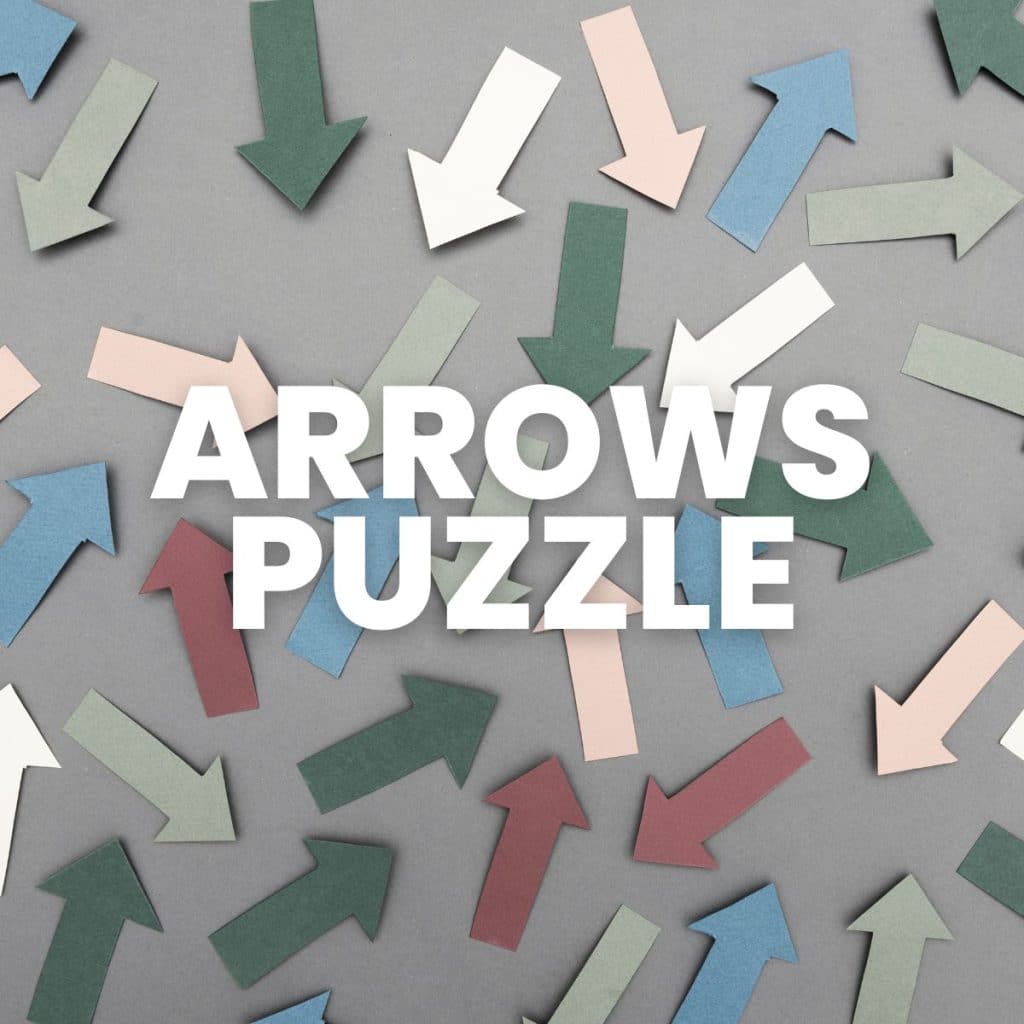
To make things easier on students, I placed the puzzle inside an 11 x 17 dry erase pocket.
MATH = LOVE RECOMMENDS…
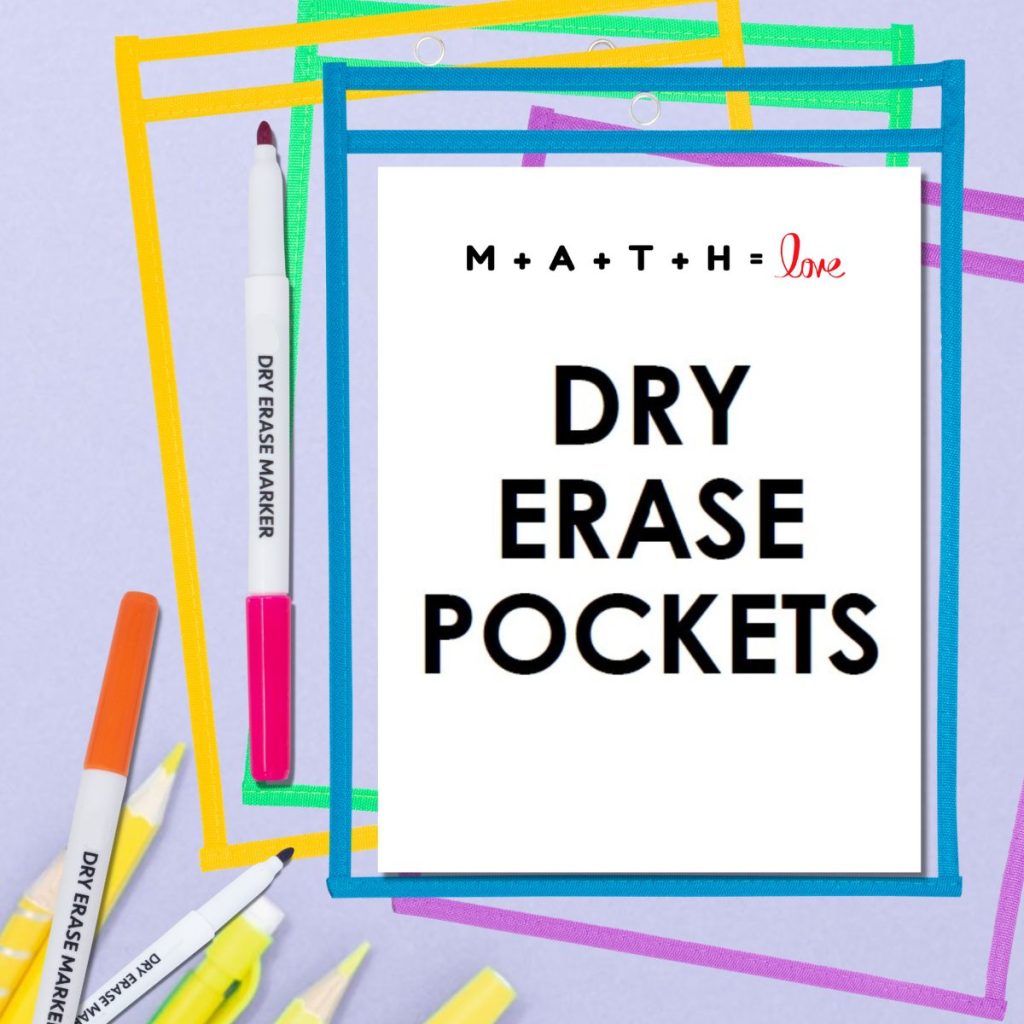
I cannot imagine teaching math without my dry erase pockets! They instantly make any activity more engaging and save me countless hours at the copy machine since I can use the same class sets of copies year after year.
Here are my current go-to recommendations:
If you are looking to save a bit of money, you can also pick up a package of 11 x 17 sheet protectors for a much cheaper price! They won’t be quite as durable, but students can still write and erase with their dry erase markers.
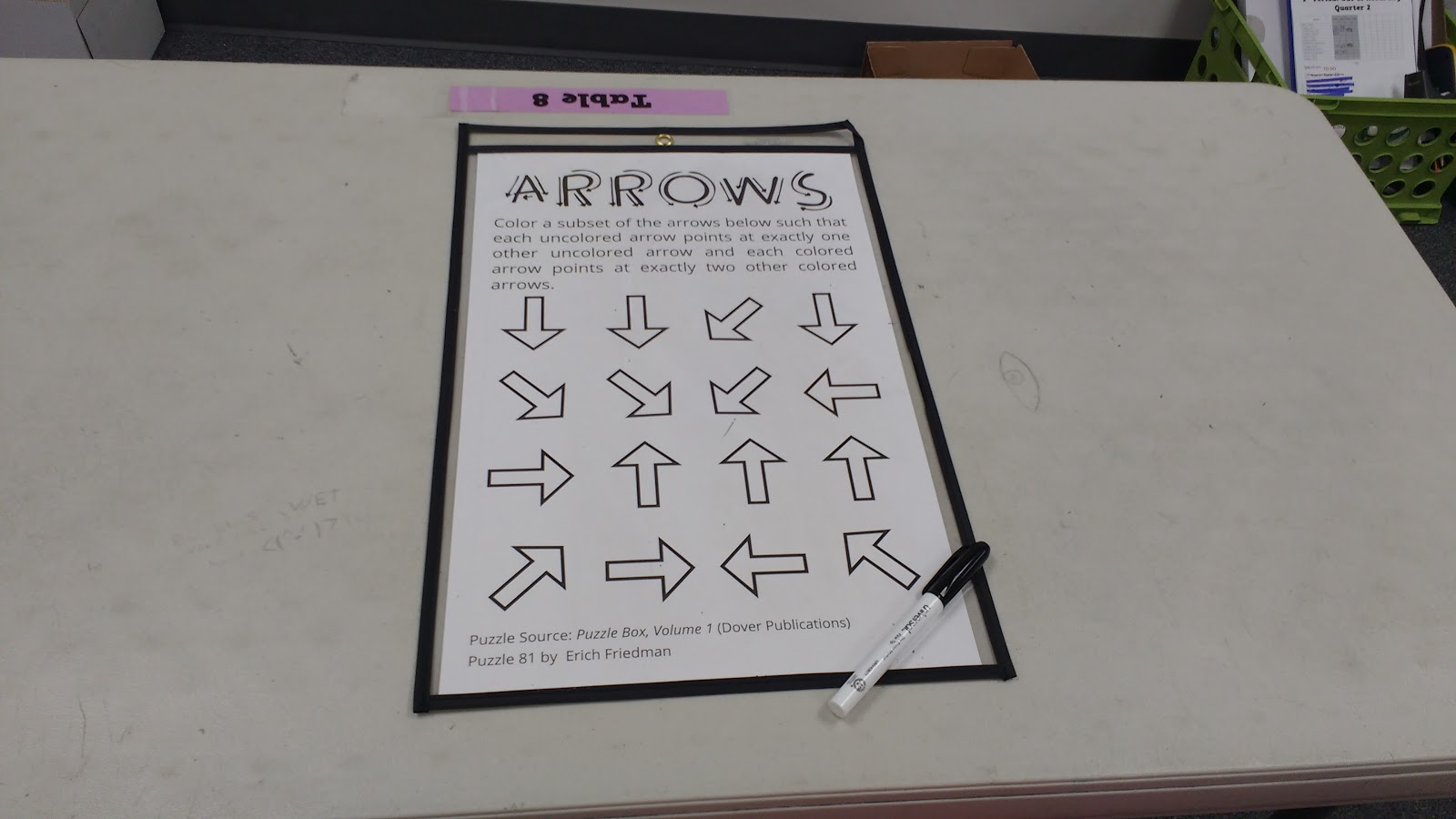
This puzzle, written by Erich Friedman, is featured in Puzzle Box, Volume 1 by Dover Publications.
My students have seemed a bit intimidated by this puzzle this week, so I’m wondering if I need to rewrite the instructions somehow. The goal of the puzzle is to color a subset of the given arrows so that each uncolored arrow points at exactly one other uncolored arrow and each colored arrow points at exactly two other colored arrows.
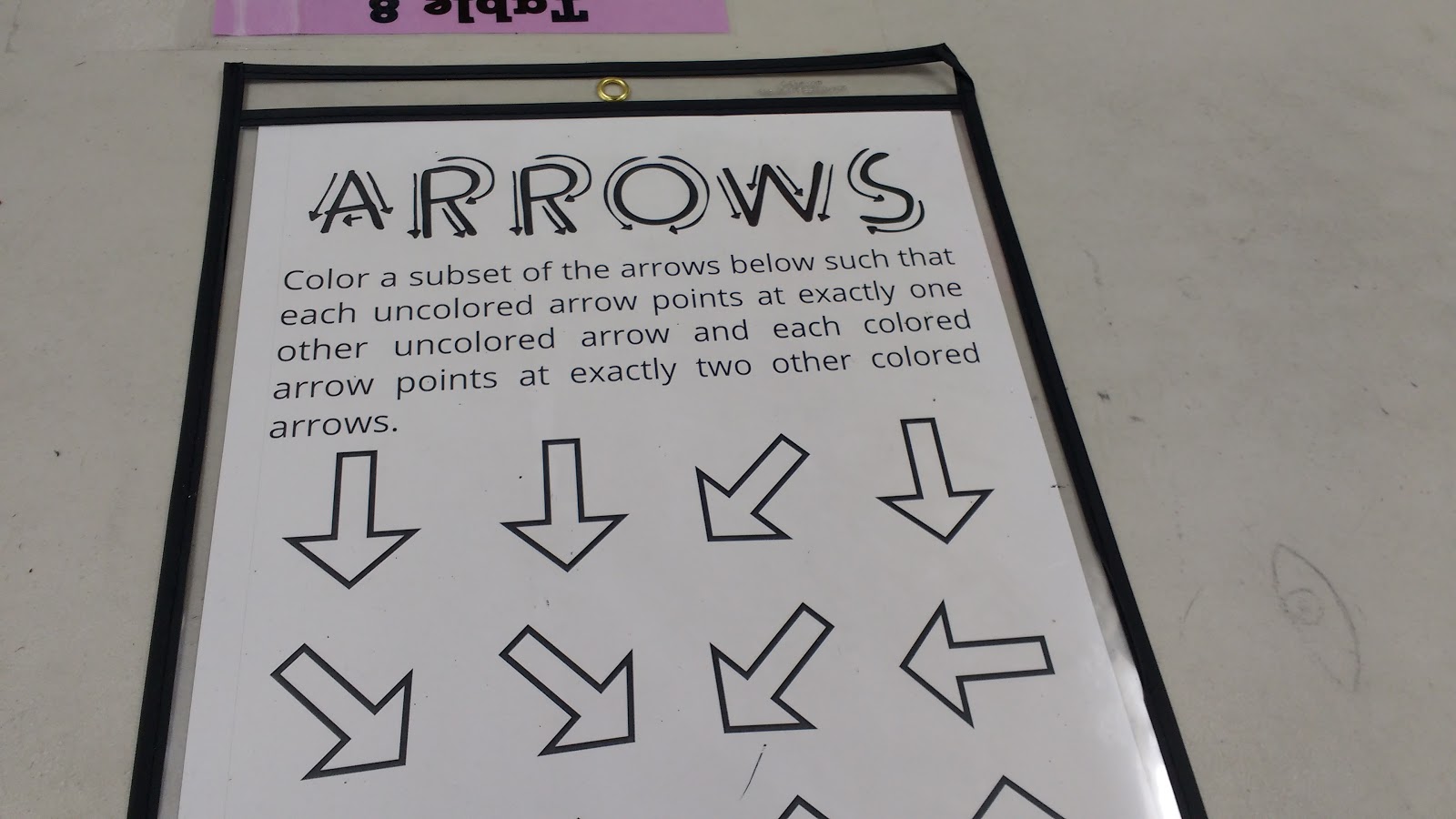
Some of my students who are regulars at the puzzle table read the instructions and immediately decided this puzzle was not for them without even attempting it. I’m wondering if the coloring aspect is part of the issue. If I laminated and cut out different colored/uncolored arrows that students could place on the puzzle board, would they be more willing to give the puzzle a try?
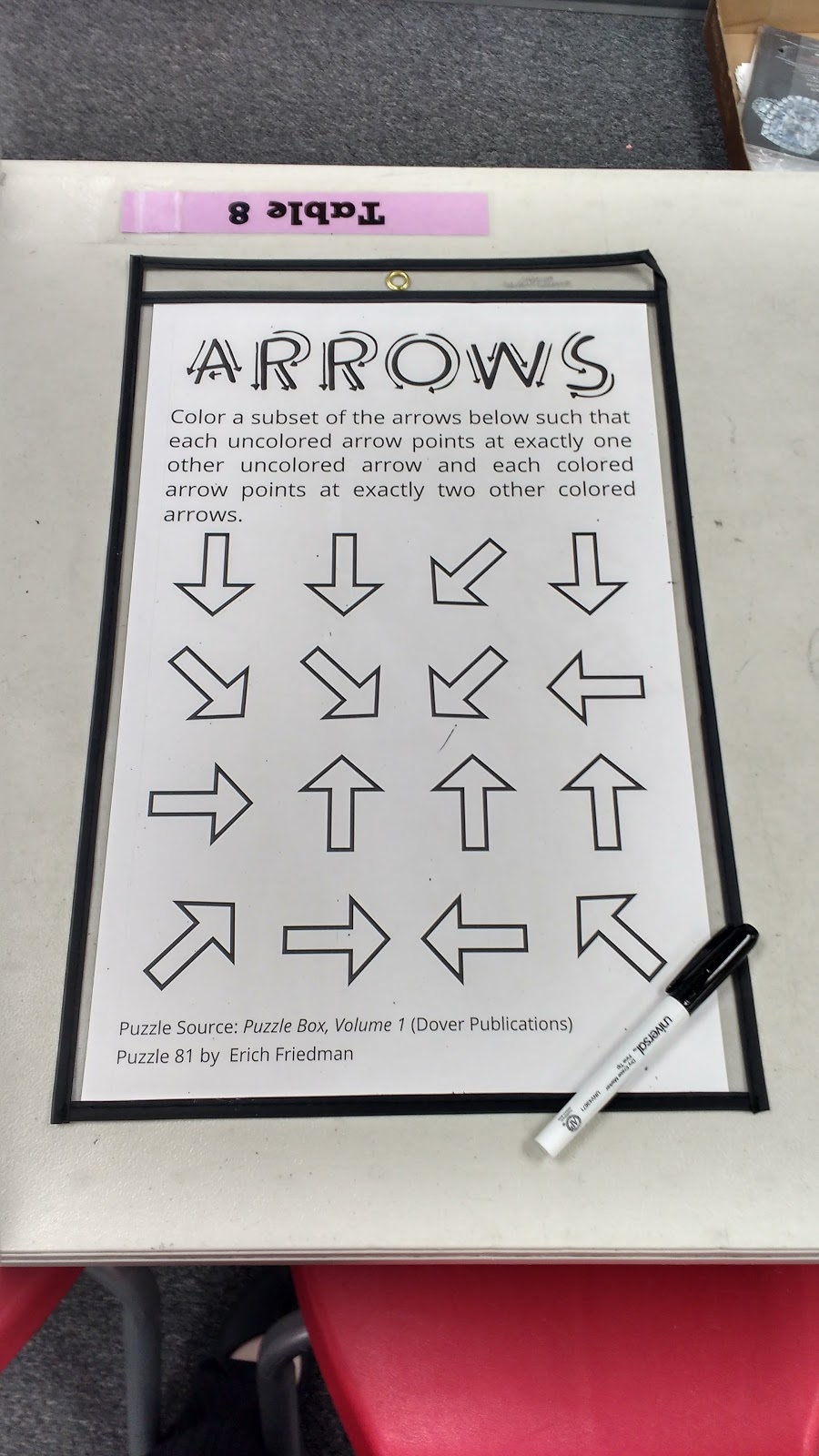
During my planning period today, I sat down with a student who often hangs out in my room during my planning period (he has a free hour), and solved this puzzle with him. Once I read the instructions and re-explained what it meant for an arrow to point at other arrows, he was able to pretty much solve the puzzle with only a tiny bit of guidance from me.
This makes me think that this puzzle would make a better class-wide challenge than a puzzle table challenge which is more of a tackle-it-on-your-own-if-you-are-so-inclined challenge.
Digital Version of Arrows Puzzle
Kathy Henderson has created a digital version of this Arrows Puzzle in Desmos Activity Builder.
Files for Arrows Puzzle from Erich Friedman
Click here to SAVE the file to your device.
Arrows Puzzle (PDF)
2774 saves – 157.16 KB
The arrows puzzle is designed to print on 11 x 17 cardstock, but you can easily print it scaled to ~65% to print it on letter sized paper.
Interested in more puzzles for your classroom? Check out my blog page dedicated to all things puzzles.
Puzzle Solutions
Puzzle solutions are available on a password-protected solution page. I do not openly post the puzzle answer keys because one of my goals as a resource creator is to craft learning experiences for students that are non-google-able. I want teachers to be able to use these puzzles in their classrooms without the solutions being found easily on the Internet.
Please email me at sarah@mathequalslove.net for the password to the answer key database featuring all of my printable puzzles and math worksheets. I frequently have students emailing me for the answer key, so please specify in your email what school you teach at and what subjects you teach. If you do not provide these details, I will not be able to send you the password.
Not a teacher? Go ahead and send me an email as well. Just let me know what you are using the puzzles for. I am continually in awe of how many people are using these puzzles with scouting groups, with senior adults battling dementia, or as fun activities in their workplace. Just give me enough details so I know you are not a student looking for answers to the puzzle that was assigned as their homework!



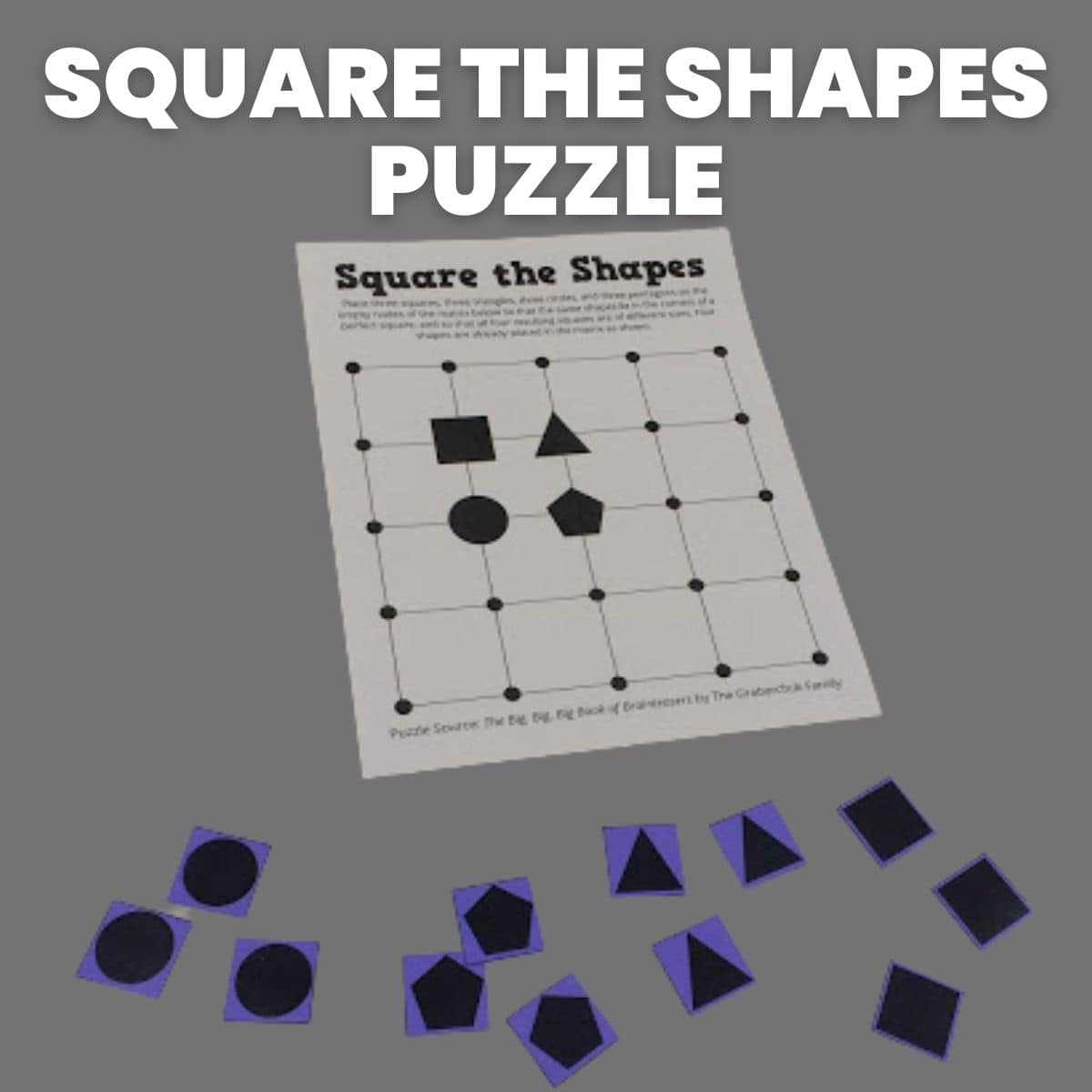
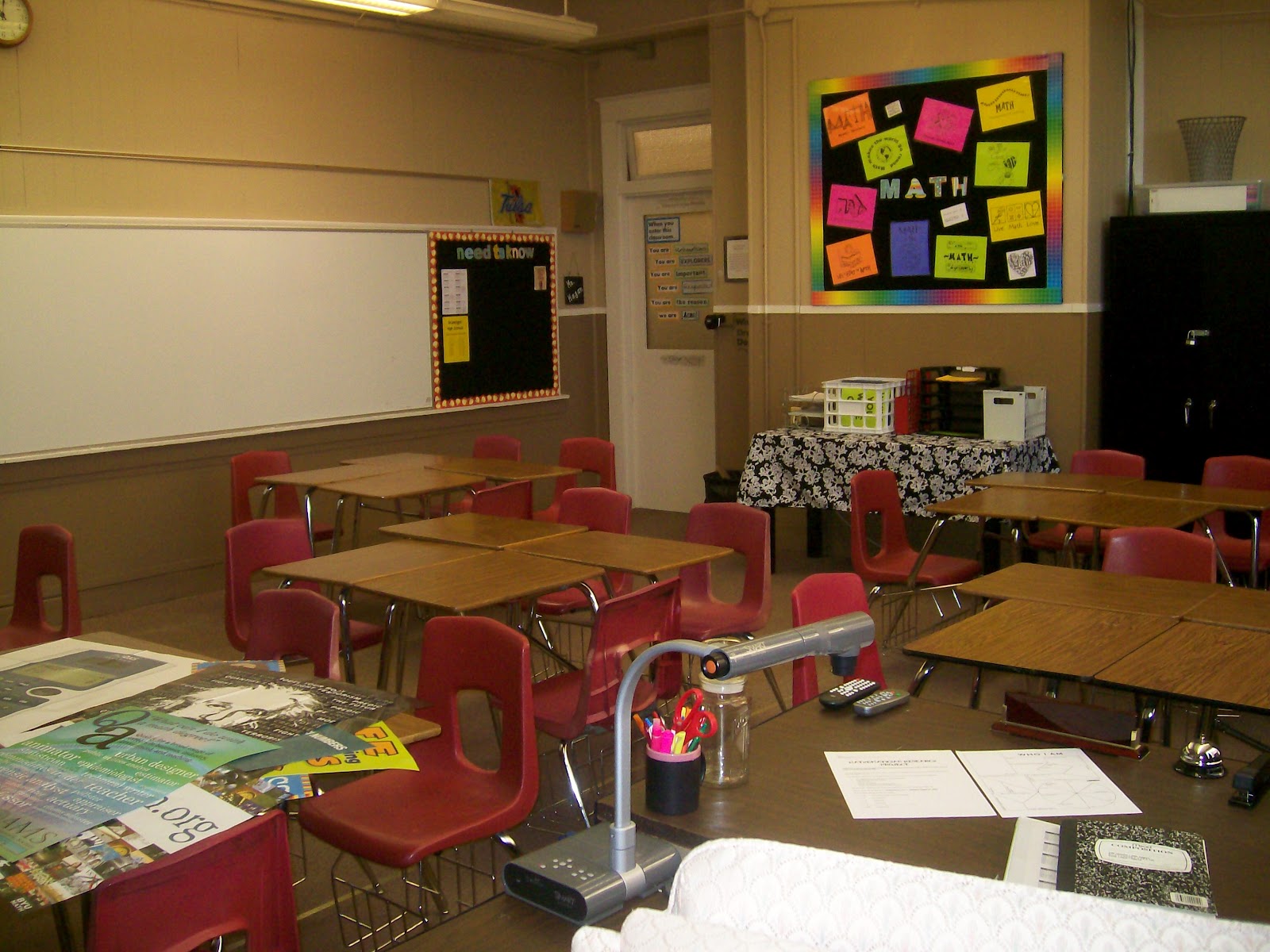


Maybe the directions do need to be reworded. I know my students would be scared off by the word "subset." Also, how does an arrow point to more than one other arrow?
An example of what "points at exactly two other colored arrows" and "points at one other uncolored arrow," whether or not they turn out to be correct, might clarify the directions. Right now, you're left wondering how an arrow points at two arrows. Perhaps the solution is to start together as a class, get partway, and let those who are inclined finish.
Please clarify the directions for us so we can attempt the puzzle.
I was able to solve it by assuming that when it says "points directly at" it means that in its line of sight, a coloured arrow must have two coloured arrows in that direction. So you can skip an arrow, but in the direction it is pointing, a coloured arrow would point towards two coloured arrows. An uncoloured arrow would have one uncoloured arrow in its direction. Not sure that makes sense but it worked for me that way.
This comment has been removed by the author.